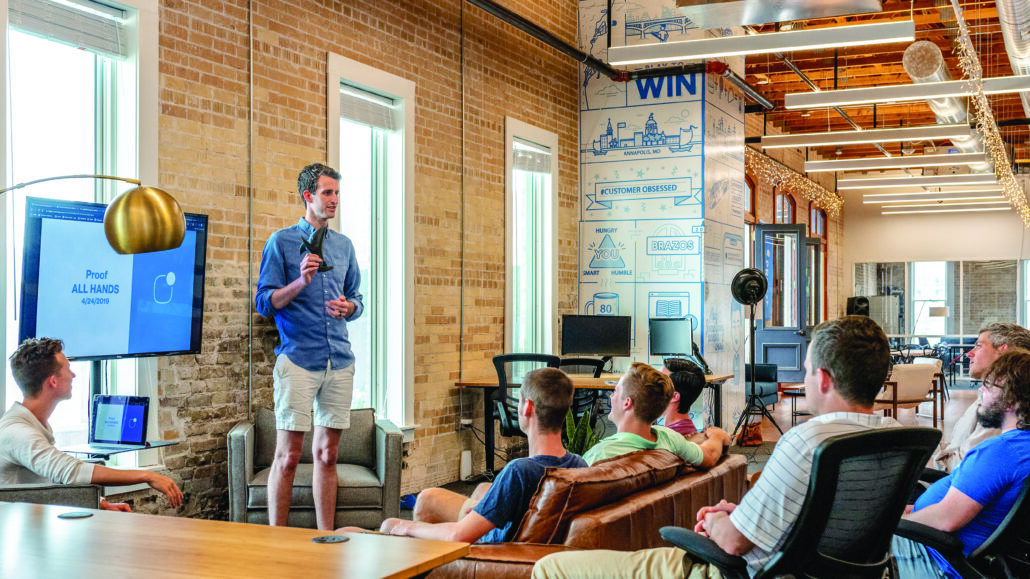
How to Retain Younger Workers
 By Jane Genova
By Jane Genova
The silver lining in the Great Resignation has been this: It provided organizations added information and insight about why employees leave jobs and how to prevent that. The HR Chally Group found that three out of four exits could have been avoided. In addition, members of the workforce themselves have discovered that the grass is not always greener. Career platform The Muse documented that 72 percent regretted changing employers. In addition, there has been specialized research on retaining Millennial (1981 – 1996) and Generation Z (1997 – 2021) employees. That youth segment creates real competitive advantage for retailers. This article discusses how retailers can be proactive in preserving such a key human asset in their businesses.
Turnover realities
In general, turnover has been a major problem for business. According to Employee Benefit News, the average replacement cost totals about one-third of the annual salary. Finance Online confirms that retail has a high turnover rate – almost 31 percent compared to the national average of 20 percent. What drives turnover keeps changing as society, the economy, industry and the individual change. COVID introduced new factors, reports employment website Indeed. At the top of the list are issues such as work-life balance, opportunities created by the jobs boom and mental health concerns such as burnout. In addition, there were also the usual irritants ranging from salary to benefits.
However, research about job-hopping youth indicated that Millennials and Generation Z constitute a unique category. What prompted quitting included factors that had not been standard in the decisions to exit by Generation X, Baby Boomers and the Silent Generation.
That should not have been a surprise. Because of the combination of the uncertain economy they grew up in, witnessing their parents being laid off, technology, social media, popularity of entrepreneurship and political activism, they are very different from older generations.
In addition, they have the power of numbers to influence and have their way. Millennials, totaling 72.1 million, represent the largest generation in America. Generation Z has 68 million members. Together that adds up to more than 140 million. Microsoft found that 52 percent had considered quitting during COVID.
Youth’s value-add
America is a youth-obsessed nation. Unfortunately, that can generate severe age bias in employment. ProPublica, along with the Urban Institute, found that more than half of over-50 employees will be “forced out,” and that only one in 10 will be able to obtain future jobs providing comparable compensation. To some, that might seem unfair, but in an economy driven by technology and requiring rapid change, young people often meet the specifications for myriad jobs better than older applicants.
In retail, that is usually the situation. As is well known, Millennials and those in Generation Z are totally comfortable with both digital technology and social media. Increasingly, retail is moving in those directions, both for business operations and promotion. The two, of course, intersect.

Even the mom-pop retailer is experiencing digital transformation. The need for that has so accelerated that vendors for those services, documents researcher Techavio, project that market will grow by more than $137 billion between 2020 and 2025. The ongoing challenge for retailers is to select exactly the right service-providers. Young employees can function as part of the in-house decision-making team.
In addition, both generations are highly sensitive to social and political issues. That means they are the source for hands-on guidance to their employers on how to position and package their branding and stock products to align with the “right thing to do.” In the University of Pennsylvania Wharton School’s “Social Impact Research Spotlight,” three findings stand out. One, customers expect the businesses they associate with to contribute to the greater good. Two, for that they are willing to pay more. And three, the values expressed must be authentic.
Also, young employees add value through their entrepreneurial spirit and zest for flexibility. That mindset helps business innovate and implement that quickly. Speed has always been considered a competitive advantage. Currently, in this volatile business environment, it is a necessity.
In terms of an advantage for budgeting, because they do not have decades of experience, they command a lower wage.
Retention musts
Some of youth’s expectations about the world of work mirror those of older generations. They want, for example, work-life balance, no micromanaging, flexibility in where, when, and how tasks can be accomplished and salary and benefits that are in line with what competitors provide.
However, usually when it comes to youth, there are new twists on all that. That is what human resources policymakers and front lines have confirmed, and that is exactly what retailers have to understand.
For instance, the benefits should include paid educational opportunities and ongoing training. Overall, professional development, found a recent Microsoft study, is their priority. As Microsoft puts it, learning is a key retention tool.
That begins with adequate training as part of the onboarding process. Once on the job, 73 percent demand rotation among functions to acquire new knowledge and skills. Their belief system is that it is through learning that they will experience career growth. Should they not find that where they are employed, they will leave. Microsoft uncovered this reality: Where that was lacking, 52 percent were considering quitting. LinkedIn Workplace Confidence Survey added to that: 40 percent of youth interviewed were willing to accept a 5 percent pay cut for the possibility of more career advancement.
 Another priority of youth is having the scheduling freedom to pursue their entrepreneurial dreams. Here too there is a new wrinkle. McKinsey’s “The Next Normal Arrives” explains the general surge of entrepreneurship among workers. However, for youth, because of their being so at home with digital, that is often taking the form of an enterprise in the Creator Economy. Essentially, that niche operates on software. The business could be a small side gig publishing a blog that accepts sponsored content for $100 a pop. Or it could be producing videos for TikTok for lucrative fees.
Another priority of youth is having the scheduling freedom to pursue their entrepreneurial dreams. Here too there is a new wrinkle. McKinsey’s “The Next Normal Arrives” explains the general surge of entrepreneurship among workers. However, for youth, because of their being so at home with digital, that is often taking the form of an enterprise in the Creator Economy. Essentially, that niche operates on software. The business could be a small side gig publishing a blog that accepts sponsored content for $100 a pop. Or it could be producing videos for TikTok for lucrative fees.
In addition, there is, reports Duke University, the need for detailed transparency. That is a cultural issue. Instead of hidden agendas about tasks and objectives, the business must spell out expectations. They are more concerned about internal organizational values than older generations.
Retailers determined to not lose youthful talent will focus on these priorities from the date they are hired. Indeed warns that the first year is when most young workers make decisions about leaving.
Intragenerational change
Not only are there significant shifts in everything from values to behavior among generations. Generations themselves evolve. Baby Boomers journeyed through Eisenhower conformity, 1960s radical politics, careerism, then employment age bias and now the struggle to remain relevant. If retailers are successful in retaining Millennials and Generation Z, they have to be prepared for those generations to also change, right on the job.
Jane Genova is a business writer and career coach. Her articles have been published in AOL, Motley Fool, Yahoo Finance, Payment Week, Business.com, Daily Business News and O’Dwyer PR.



